Shoulder Blade Muscles Pain
When feeling pain in the upper back means near the scapula bone and also feel weakness in the affected arm, mostly when doing overhead actions, and it is indicated to be muscle pain in the shoulder blade.
You also feel to cracking sound when you try to move the shoulder joint. This pain is due to many causes like Muscle strains and occurs to damage in the shoulder blade muscle. This injury is produced by pain with redness and swelling in the muscle pain region.
Shoulder Blade Muscles Pain is relieved with the use of the RICE principle, pain medication, and physiotherapy treatment.
What is shoulder blade muscle pain?
Shoulder Blade muscle pain occurs between the shoulder blades and is common.
Sometimes Doctors guide this pain as inter-scapular pain.
You feel pain in the shoulder blade generally dull, aching, shooting, and sore pain in the upper part of the back between the shoulder blades.
Most of the time this pain is not too serious, but in some cases, it has become an indication of a more serious condition.
So that you must try to know about the causes of muscle pain and the treatment and prevention points of the pain area.
Anatomy of the shoulder blade
The shoulder blade is known as the scapula bone and it is a large and triangular-shaped bone that lies in the upper back.
This scapula bone is surrounded and supported by a complex system of muscles that work together to help you move your arm.
Near the shoulder blade, muscles include the rotator cuff muscles & teres major, in the rotator cuff muscle includes supraspinatus, infraspinatus, subscapularis, and teres minor.
All these muscles are located near the shoulder blade.
The shoulder blade muscle has many functions one of these functions is support to pivotal motions of the shoulder joint.
Causes of the shoulder blade muscles pain
Muscle strains:
Occur when the muscle becomes too overstretched and torn.
It occurs due to many reasons include to :
- When you raise something heavy
- Inadequate posture
- When you work at a computer for long periods suggest the whole day.
- During exercise and sleep
Injuries:
When occur to Injuries other parts of your body also cause pain between your shoulder blades.
These injuries include:
- Spine ruptures
- Shoulder dislocation
- Rotator cuff tears
- If happen to other damages like trauma
Other causes:
Other leads to this pain include:
- Scoliosis and degenerative disc disorder
- Occur to a herniated and bulging disc in the spine
- When people appear to have osteoarthritis in the joints around the neck, spine, and ribs
- Due to any reason occur to spinal stenosis and a narrowing of your spinal cord
- Myofascial pain syndrome
- Shingles
- Fibromyalgia
- Acid reflux
- Certain cancer diseases like lymphomas, lung cancer, esophageal cancer, liver cancer, and all cancers which are applied to bones
Some Emergency causes:
When occur to Some sudden events and give result in shoulder pain which requires emergency care. These conditions produce severe pain,
Including Some conditions like as :
- Heart attack: This shoulder blade pain sometimes appears as a symptom mostly of heart attacks mostly in females.
- Aortic tear: This occurs due to a tear and rupture in the inner layer of the aorta, which also produces sharp and extreme pain in your upper middle back.
- Pulmonary embolism: when occurring pulmonary embolism is also produced by a sudden and sharp pain in the shoulder blades accompanied by shortness of breath.
Symptoms of the shoulder blade muscles Pain
- You feel pain, which is either a dull ache or sharp, around the scapula bone.
- Feeling of weakness in the affected arm mostly when you attempt the overhead activities.
- This pain is doing the limited range of motion-ROM so that you feel too challenging to lift your arm above your shoulder joint.
- Sometimes you also hear to snapping sound during the shoulder joint moves.
- You are seeing the visible point of the scapula which is known as winging of the scapula.
- You also feel to your posture is leaning on the affected side.
Diagnosis of shoulder blade muscles pain
When you meet to doctor for an injury then the doctor is asked to you some questions about the medical history and symptoms.
During the physical analysis, the doctor is check the weakness, tenderness, and tightness in the area of the scapula and shoulder joint.
Then the doctor is suggesting to you some imaging tests for diagnosis :
- CT scan
- X-ray
- MRI scan
- Sometimes the doctor is guiding to you a specialist doctor like a neurologist or an orthopedist for further diagnosis and technological treatment.
In which condition do require you contact to the doctor in an emergency?
You should contact the doctor when the pain is become too severe, or unusual and doesn’t go away after 1 week and after the prior treatment.
When you feel the following symptoms with the pain for many days then you require to contact a doctor:
- Chest pain
- Extreme sweating
- Coughing up blood
- Shortness of breath
- Rapid or irregular heart rate
- Lightheadedness
- Fever
- Failure of vision and Consciousness
- Sudden problem speaking
- Paralysis on one side of your body
- Unexplained weight loss
Treatment of the shoulder blade muscles pain
Treatment for your shoulder blade pain will rely on the cause and severity of your condition.
The healing time differs from person to person.
RICE principle:
When you feel pain in the muscle doctor is recommended to RICE principle as home treatment and primary treatment.
- R-rest: When you feel muscle pain you must do the rest for sometimes form movements release muscle pain.
- I-ice: You are used to ice on the site of the pain for 10 minutes, release to swellings and muscle pain but always used to the ice with the help of a towel between the skin and ice to prevent ice burn, you can also be used to an ice pack and frozen peas for ice therapy.
- C-compression: You can also use compression bandage release to muscle pain, & swelling.
- E-elevation: You must be elevated to the injured arm with the help of a pillow under the arm for release to muscle pain and swelling.
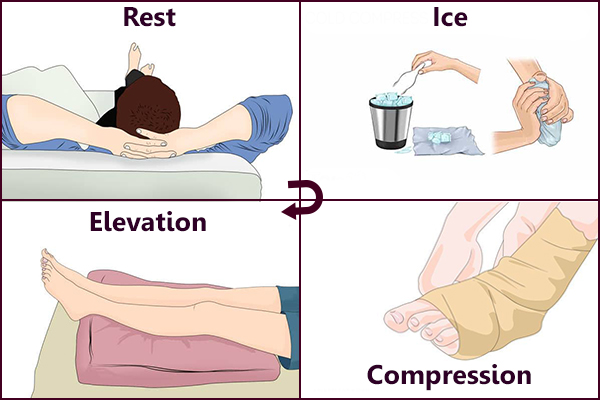
Pain Medications:
- Some medicines which are useful to you relieve pain and discomfort between your shoulder blades.
- You can take to various anti-inflammatory medicines like Naproxen sodium and Ketoprofen.
- Sometimes the doctor is advise to you steroids for extreme pain like a pill & injection which help you release the pain & inflammation.
- Sometimes the doctor specified muscle relaxers and specific antidepressants drug for pain management.
- You can also be used pain relieving gel and spray such as volini gel and spray release for muscle pain.
Hot and cold therapy:
- When you use hot and cold compresses between your shoulder blades it reduces pain.
- Generally, the best use of this treatment is used for 10 minutes at a time and every few hours.
Diet:
- Specific foods contribute to inflammation in your body which may worsen the symptoms.
- So avoid processed foods and eat plenty of fruits and vegetables or choose foods high in omega-3 fatty acids, like salmon.
Physiotherapy treatment for shoulder blade muscles pain
When the muscle pain is not reduced after the home treatment and pain medication, after then the doctor has suggested physiotherapy treatment for the avoidance of muscle pain.
Physiotherapy treatment is help you reduce pain, swelling, spasm, and tightness of the muscle pain.
The physiotherapy treatment includes massage, electrotherapy treatment, and exercise therapy.
Massage :
When the trigger or tender points is present in the muscle pain site therapist is suggested to massage therapy release to the muscle pain.
Massage is used after 2 to 3 days following the RICE principle when feeling to release of the pain.
Massage is given with the help of the oil and applied for 5 to 10 minutes.
Massage is applied 3 times each day at home.
Electrotherapy treatment :
After the RICE principle, pain medication, and massage if the muscle pain is not reduced then used electrotherapy treatment is released muscle pain.
To reduce the swellings, spasms, and pain therapist suggested this electrotherapy treatment.
In electrotherapy, the treatment physiotherapist is used to many machines.
- ( US)Ultrasound therapy: When the trigger and tender points are present therapists apply ultrasound therapy for the release of muscle pain, this treatment is given with the help of gel and used for 5-10 minutes on the area of pain.
- This therapy helps you discharge pain and swelling.
- ( SWD )short wave diathermy: Decrease to pain therapist is applied, release to spams on the site of pain.
- ( IFT )Interferential Therapy & ( TENS ) is Transcutaneous Electrical Nerve Stimulation in the region of pain.
- This therapy is applied for 10 minutes to the pain site.
Exercise for Shoulder blade muscles pain
After following the RICE principle for 2- 3 days at home and primary treatment and the help of pain medication, feel removed from the pain.
When you feel too relaxed and released from your muscle pain then the therapist is advised to you exercise therapy relieve to muscle weakness and tightness.
Exercise therapy for muscle pain includes strengthening and stretching exercises.
Strengthening Exercise help you relieve muscle weakness, as well as stretching exercise, helps to relieve muscle tightness.
Strengthening Exercises:
After the use of electrotherapy and massage for 2 to 3 days release muscle pain by therapist then the therapist suggested to you strengthening exercises release to muscle weakness.
This exercise is always recommended when feel to release pain and when you feel comfortable.
This all-strengthening exercise helps to muscle weakness and pain:
- Shoulder blade squeeze
- Arm circles
- Plank
- Shoulder raises
- Shoulder rolls
- Chin retraction
- Standing arm swings
- Standing arm lifts
- Wide-legged standing forward bend
- Cat cow pose
- Reverse prayer pose
- Cow face pose
- Eagle arms spinal rolls
- Cross-body arm swings
- Ragdoll Pose
- Shoulder rotation
- T, Y & I movements
Shoulder blade squeeze:
The patient’s position is standing up straight and bringing the elbow joint back and inward.
Pull the shoulder joint blades down and back, and then back to the starting position.
Repeat this strengthening exercise 10 times in 1 session and repeat this exercise 3 times every day.

Arm circles:
The patient’s position is in standing upright with arms feet shoulder-width apart and arms straight down your sides.
Then move your arms around in big circles going forward, must Be sure to keep your arms straight.
After many repetitions, switch to the opposite direction so that you move your arms in a circle going backward.
Repeat this strengthening exercise 10 times in 1 session and do this exercise 3 times/day.

Plank:
The patient’s position is lying on the ground facing down, with her elbow joint bent, and then tighten the abdominal muscles as you lift the hip and knee joints off the ground.
Then maintain this exercise position for 20 seconds and then back to starting position.
Repeat this strengthening exercise 10 times in 1 session and do this exercise 3 times/day.
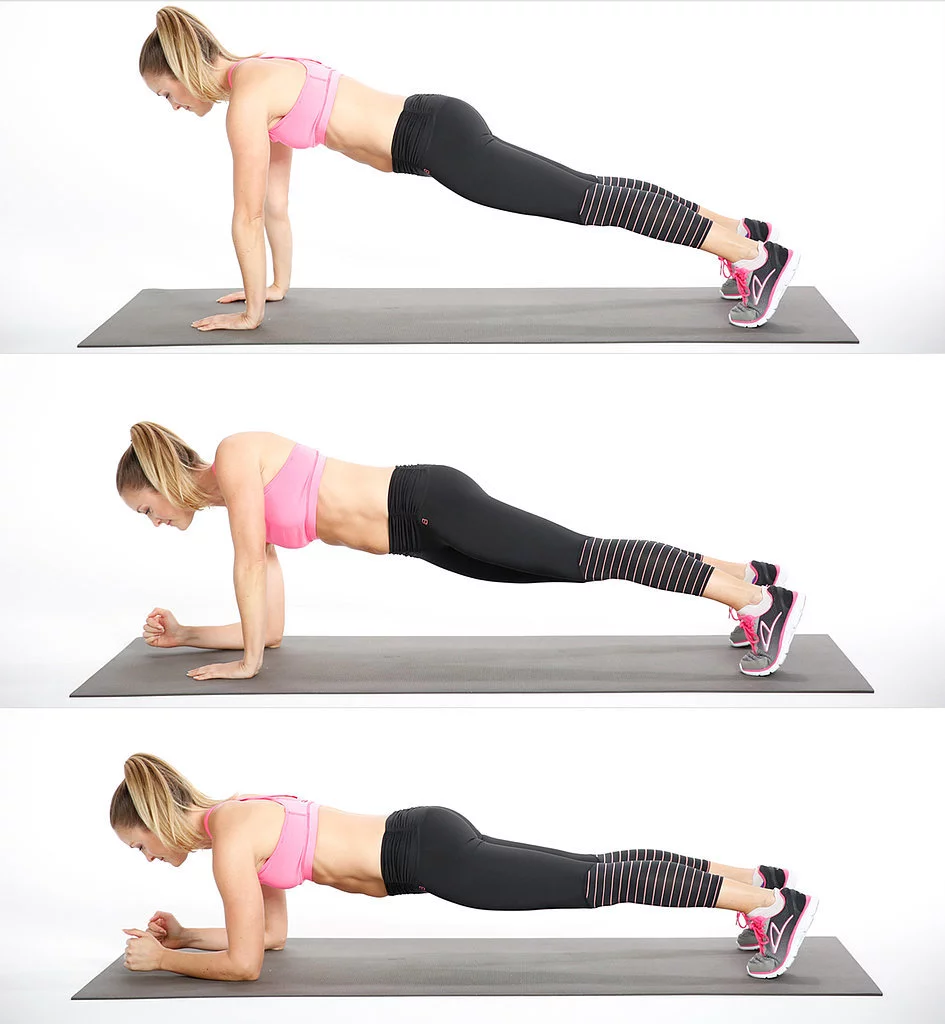
Shoulder raises:
The patient’s position is standing or sitting position.
This exercise begins with your arms by your side and a straight back, and then slowly raises your shoulder joint toward your ears.
Maintain this strengthening exercise for 10 seconds and back to the slow starting position.
Repeat this strengthening exercise 10 times in 1 session and do 3 sessions/day.
Shoulder rolls:
The patient’s position starting position is to maintain good posture in the standing or sitting position.
After then roll your shoulder joint up, back, and down.
Do this strengthening exercise activity 10 times.
Then roll your shoulder joint up, forward, and down 10 times.
Repeat this strengthening exercise 10 times in 1 session and do 3 sessions every day.

Chin retraction:
The patient’s position starting position is to maintain the head, neck, and spine in the standing and sitting positions.
Extend the arm and chin in front of you as far as go without straining, after then pull the chin back into the throat and neck.
Repeat this strengthening exercise 10 times in 1 session and do 3 sessions every day.

Standing arm swings:
The patient’s position is standing with the arms by your side and the palms facing your body, after then swing your arms forward to bring your arms as high up as they go without lifting your shoulders joint.
Lower the arms back down and bring them as far back as you can.
Maintain the rest of your body still, and continue this strengthening exercise for 1 minute.
Repeat this strengthening exercise 10 times in 1 session and do 3 sessions every day.

Standing arm lifts:
The patient’s starting position is to make fists with your hands and bring them in front of the hip joint.
Then do the inhale as you raise your arms overhead so that your hands come together above your head, after that lower back down to the starting position.
Repeat this strengthening exercise 10 times in 1 session and do 3 sessions every day.
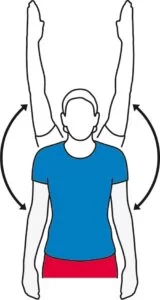
Wide-legged standing forward bend:
The patient’s position is standing with your feet wider than hip distance with your toes facing forward, after then interlacing your hands behind the back, and opening your chest.
Engage your leg muscles and must keep a slight flex in your knee joint.
Hinge at the hip joint to fold forward and bring your arms over your head toward the ground.
Then allow your head to hang down and tuck your chin in slightly to your chest.
Stay in this position for up to 1 minute, and repeat this strengthening exercise 10 times in 1 session and do 3 sessions every day.
Cat cow pose:
The patient’s starting position is to place your hands under your shoulder joint and your knee joint under the hip joint.
During inhale fill your abdomen with air and let it sink as you look up, and during exhale, as you engage your abdominal muscle.
After then try to tuck your chin into your chest and around your spine.
Continue to do this exercise for a few minutes and must focus special attention on your shoulder joint.
Repeat this strengthening exercise 10 times in 1 session and do 3 sessions every day.
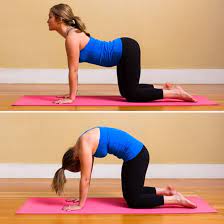
Reverse prayer pose:
The patient’s position is in the sitting, standing position, and tree pose.
Then begin this exercise with your hands behind your back with the backs of your hands facing each other and your fingers facing down.
From this position flip your hands in the other direction so that the fingers are facing up, after then turn your palms to face each other.
Press your palms together and draw your elbow joint slightly back and open your chest.
Try to keep your spine straight.
Then maintain this posture for 10 seconds.
Repeat this strengthening exercise 10 times in 1 session and do 3 sessions every day.

Cow face pose:
The patient’s position is in the sitting position and takes to your left elbow joint up to the side of your head with your hand facing down your spine.
Then with the help of your right hand draw your left elbow joint over to the right as your hand moves further down your spine.
When you feel relaxed you can also bend your right arm and bring your right hand up to clasp your left hand.
Maintain the posture for 1 minute.
Repeat this strengthening exercise 10 times in 1 session and do 3 sessions every day.
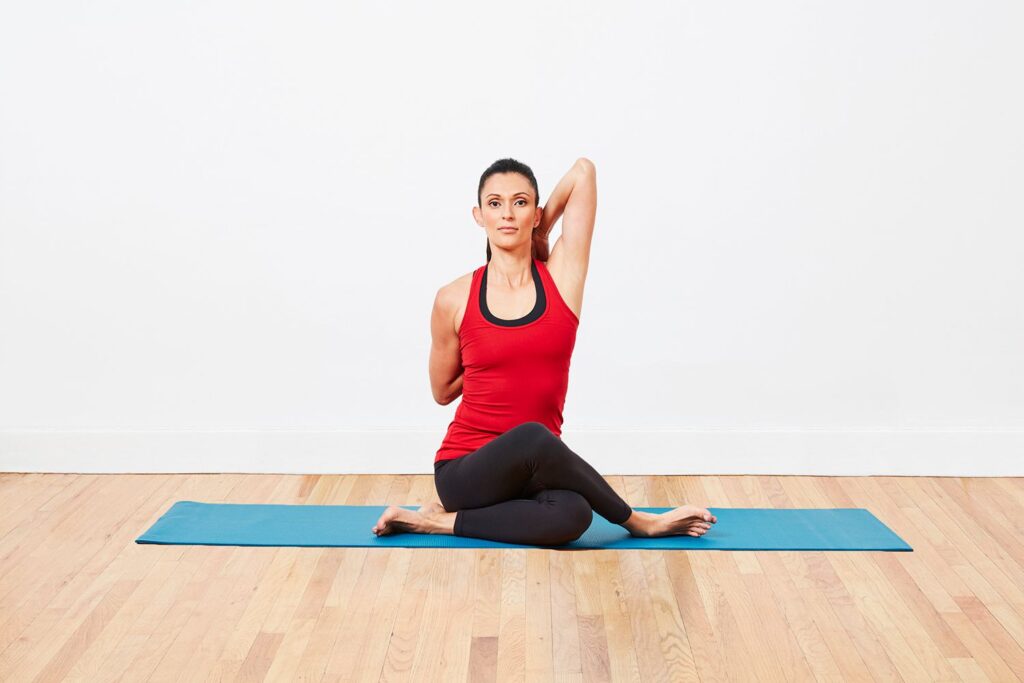
Eagle arms spinal rolls:
If the patient’s position is in a sitting position, extend your arms out to the sides, and cross your elbows joint in front of your body with place your right arm on top.
After then flex your elbow joint and place the backs of your forearms and hands together.
Then try to reach your right hand around to bring your palms together.
Maintain this position for 20 seconds.
During the exhale, roll your spine as you draw your elbow joint in toward your chest, and during the inhale, open your chest and raise your arms.
Then continue this exercise for 1 minute.
Repeat this strengthening exercise 10 times in 1 session and do 3 sessions every day.

Cross-body arm swings:
The patient’s position is standing with the feet hip-width apart.
During inhale raise the arms out to the sides and squeeze the shoulder blades together, and during exhale gently bring the arms in toward each other.
Then try to cross the right arm under the left must keep both arms straight.
During the inhale and swing the arms back out to the sides and squeeze the shoulder blades together, and during the exhale and gently swing the arms in toward each other again.
Cross the left arm under the right and must keep both arms straight.
Repeat this strengthening exercise 10 times in 1 session and do 3 sessions every day.
Ragdoll Pose:
The patient’s position is a forward-bend yoga pose which helps to remove tension in the shoulder joint.
You are in a standing position with the feet hip-width apart and flex the knee joint slightly.
Tilt forward and try to touch the toes.
Must be Keep the stomach against the bent knee joint to support the lower back, after then place each hand on the elbow joint of the opposite arm.
Then try to crown the head should point toward the ground.
Let the head hang heavily and release tension in the neck and shoulder joints.
Maintain this posture for 1 minute.
Repeat this strengthening exercise 10 times in 1 session and do 3 sessions every day.
Shoulder rotation:
The patient’s position is back to a wall allowing your shoulder blades to rest in a neutral position and bring both elbow joints out to 90 degrees, after then without moving your elbow joint and turn your right arm upward, so that the back of your right-hand touches the wall and your left arm downward, so that your left palm is touching the wall.
Then slowly change for about 20 seconds and try to must keep your arms at 90 degrees.
Repeat this strengthening exercise 10 times in 1 session and do 3 sessions every day.
T, Y & I movements:
The patient’s position is back to a wall and stands with your palms facing out, after then slowly bring your arms up to make a T shape, and must be keeping your arms and back in contact with the wall.
After that continue to bring your arms up to make a Y shape, and then do the I shape and try to touch your thumbs overhead.
But must be held focused on your shoulder blades flat against the wall.
Repeat this strengthening exercise 10 times in every shape and do 3 sessions every day.
Stretching exercise:
After the use the electrotherapy for 2 to 3 days for the release of muscle pain by the therapist then the therapist is recommended to stretch reduce to muscle tightness.
This stretching is used when the pain is dismissed and when you feel comfortable.
This all-stretching exercise helps you release muscle pain and tightness:
- Shoulder stretch
- Ear to shoulder
- Cross arm stretch
- Thread the needle
- Across-the-chest stretch
- Doorway shoulder stretch
- Pendulum stretch
- Cross-body shoulder stretch:
- Eagle arm stretch
- Standing wall stretch
Shoulder stretch:
The patient’s position is extended to one arm out in front of you.
With your other arm, pull the elbow joint of the outstretched arm toward your chest.
Maintain this stretching position for about 20 seconds.
Repeat this stretching exercise 10 times in 1 session and repeat this session 3 times every day.

Ear to shoulder:
The patient’s position sitting with a straight spine and tilt your head toward your right shoulder joint, after then go as far as you can without straining and lifting your left shoulder joint, and worsen the stretch by using your right hand to gently pull your head down.
Maintain this stretching position for 20 seconds, and repeat this stretching exercise 3 times in 1 session and do 3 sessions every day.
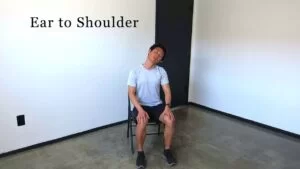
Cross-arm stretch:
The patient’s position is with your left arm across the front of your body at about chest height.
For support use your left arm with the elbow joint crease of your right arm, after then use your right hand to maintain your left arm, stretch out your shoulder joint and continue to face forward.
Maintain this exercise for 20 seconds, and repeat this stretching exercise 3 times in 1 session and do 3 sessions every day.
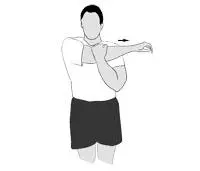
Thread the needle:
The patient’s position starts with all fours with your hands directly under your shoulders and your knee joint under your hip joint.
Raise your right hand and slowly bring it over to the left with your palm facing up.
Rest your body on your right shoulder and turn your head to face the left, making sure you are not sinking onto your shoulder joint.
Maintain this exercise position for 20 seconds.
Slowly release and come return to the starting position, and repeat this stretching exercise 3 times in 1 session and do 3 sessions every day.
Across-the-chest stretch:
The patient positioned this exercise with the right arm across the chest.
Place the arm in the crease of your left elbow joint and use your left hand to support your arm.
Maintain this exercise for up to 1 minute, and then repeat on the opposite side.
Do this exercise on both sides 3 to 5 times.
To deepen the stretch, lift your arm at shoulder height, and repeat this stretching exercise 3 times in 1 session and do 3 sessions every day.

Doorway shoulder stretch:
The patient’s position is standing in a doorway with your elbow joint and arms forming a 90-degree angle after then step right foot forward as you press your palms into the sides of the door frame.
Bend forward and engage the core muscle.
Maintain this exercise position for up to 20 seconds.
Repeat the exercise with your left foot forward, and repeat this stretching exercise 3 times in 1 session and do 3 sessions every day.
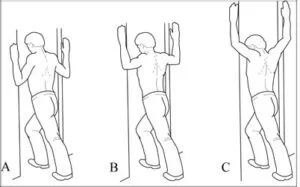
Pendulum stretch:
The patient’s position is standing with the feet hip-width apart, then bending forward and looking at the floor.
Then place the right hand on a table and chair for support, and let the left arm hang down.
After then swing the left arm gently in small circular movements and let gravity do most of the work.
Continue this exercise for 20 seconds to 1 minute.
And then alter the direction of the movement, and repeat this stretching exercise 3 times in 1 session and 3 sessions every day.

Cross-body shoulder stretch:
The patient’s position is standing with the feet hip-width apart, and then trying to stretch the right arm out straight.
Start the right arm across the body, so that place the hand points to the ground on the other side of the left leg.
Flex the left arm at the elbow joint, and then hook the left forearm under the right arm, and for support use the right arm above the elbow joint.
Use the left forearm to pull the right arm further in and across the body and try to stretch the back of the right shoulder.
Maintain this exercise for 20 seconds, then repeat this stretching exercise on a different side, and repeat this stretching exercise 3 times in 1 session and do 3 sessions every day.
Eagle arm stretch:
The patient’s position is standing with your feet hip-width apart.
During inhaling and lift the arms to the sides, during exhaling and swing the arms in toward the body.
After then allow the right arm to cross under the left arm.
Cradle the left elbow joint in the crook of the right elbow joint, and then start the palms together so that they reach for each other.
When the palms are not touching and keep the backs of the hands together, then take 3 or 4 deep breaths.
Release the stretch and repeat it on the other side with the left arm crossed under the right, and repeat this stretching exercise 3 times in 1 session and do 3 sessions every day.
Standing wall stretch:
The patient’s starting position is to place both hands on a wall from a 90-degree angle to the body, then walk your feet back till your arms are straight and bow, hinging forward at the hip joint.
But take care of this thing don’t push on the wall and don’t allow your arms to lift too high to avoid shoulder impingement.
Must try to keep your shoulder blades set back and avoid scrunching your shoulder joint around your neck, and repeat this stretching exercise 3 times in 1 session and do 3 sessions every day.
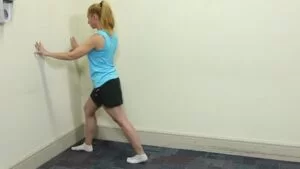
Surgical Treatment
After the medical and physiotherapy treatment when you do not feel pain relief then sometimes the doctor is recommended surgical treatment.
Surgery is needed rarely in this shoulder blade pain.
But some extreme conditions require for surgery include:
- Painful arthritis
- Painful shoulder blade pain
- Damages treatable by surgery
- Non-responsiveness to more conservative treatment
- Shoulder blade rupture
- The surgery involves releasing scar tissue and repairing tendons in the shoulder and upper back region.
- Sometimes the surgeon suggests shoulder replacement surgery.
Prevention points for the shoulder blade muscles pain
- You must maintain a good posture in everyday life.
- Good posture is one of the best preventative points for all shoulder blade causes.
- Every day follows a good posture like standing tall and sitting upright to avoid slumping.
- You must be used to ergonomic workplace items like chairs and pillows to help you.
- Must be sitting only for short periods and stretch to repeatedly during use of computer or desk.
- Always take care when you lift something because when you Lift heavy objects it also becomes to cause injuries, but when you try to lift a heavy object that flexes your knee joint first.
- Always do the warm-up first.
- Always do light stretching as a warm-up before a workout and exercise time.
- It is useful to you prepare the muscles for activity and helps to avoid damage.
- Always maintain a healthful lifestyle.
- Eat a healthy diet and get good sleep.
- Do exercise on a regular day lifestyle.
- Always find ways to manage daily stress and must keep a positive mindset.
FAQ
How long does it take time for a shoulder blade muscle to recover?
It can take 4 to 6 weeks to heal fully from mild shoulder pain. There are some things you should and shouldn’t do to help relieve shoulder pain.
What does muscle pain in the shoulder blade feel like?
Having pain underneath or near your shoulder blade-the triangular bone that includes the back of your shoulder-may limitation of arm motions and interfere with daily activities. This pain can range from being sharp or burning, such as between the spine & shoulder blade, to tender or achy across the shoulder or upper back.
What is the home treatment for shoulder pain?
A cold pack inside a pillowcase for 10 minutes can help your shoulder. Ice massage is also an option, ice should not be left in direct contact with the skin for over 5 minutes due to the chance of frostbite. Icing the shoulder is a useful remedy for shoulder pain.
How should to sleep with shoulder blade pain?
If the face rotator cuff pain-or shoulder pain, in general try sleeping on your back with a small pillow nested between your shoulder blades. Often, morning shoulder pain leads to the body’s flatness during nighttime hours.
Can Gastric cause shoulder blade pain?
Gastroesophageal reflux disease (GERD) may cause directed pain to the back in the region between the shoulder blades. Other symptoms of GERD include: Chest pain or ache.
Is shoulder blade pain related to the heart?
There are a few various heart disease-related sources of shoulder pain. The disease most commonly associated is probably a heart attack, but other likely cardiac conditions can also trigger this pain.


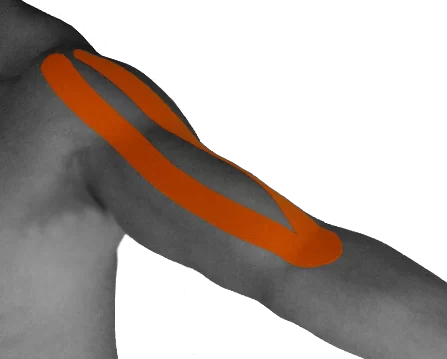
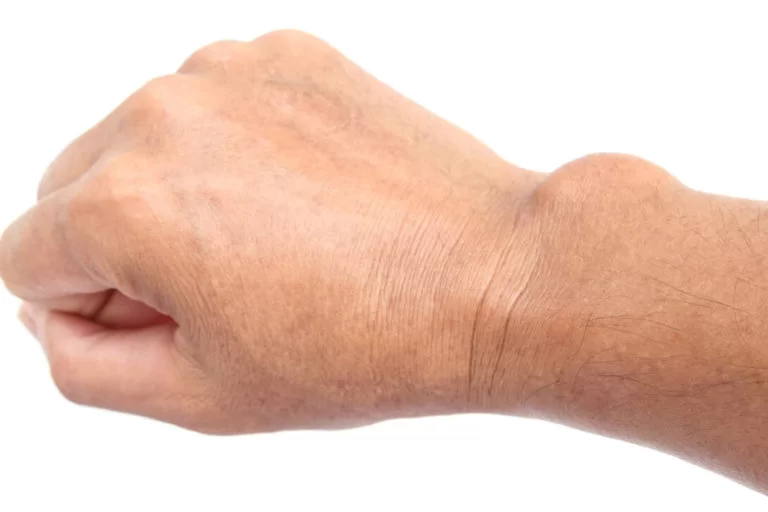

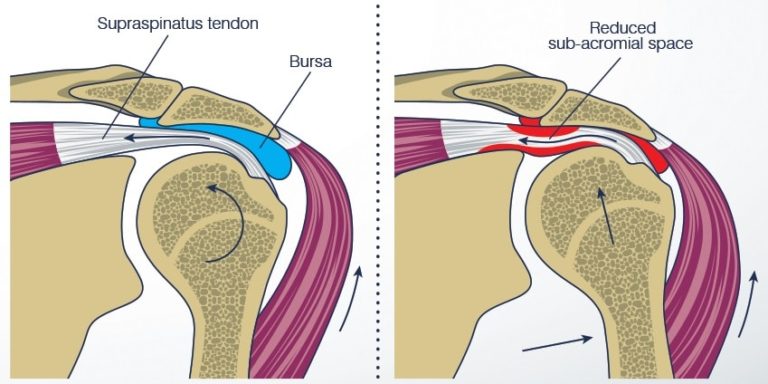
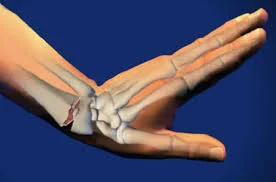
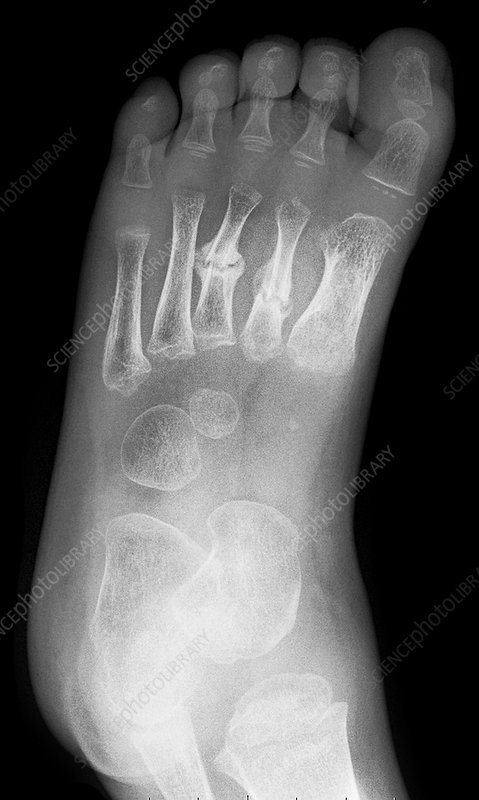
3 Comments